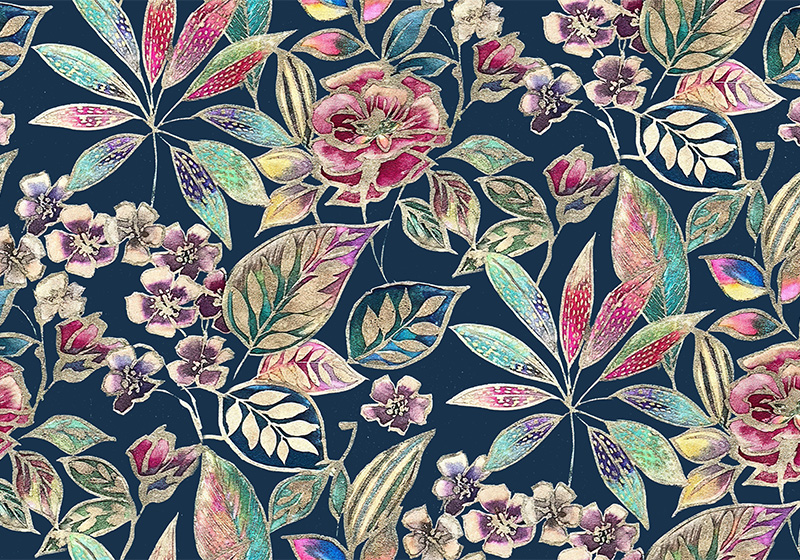Table of Contents
We explore patterns used in graphic design, their characteristics, how to create them and some key examples
Patterns in graphic design: introduction
In a world where graphic design is essential for creating brand identities, websites and all types of interface, understanding patterns and how they can be used is vital. This article will explore exactly what we mean by the word “pattern” in the field of graphic design, the various types of pattern available and how you can make best use of them in your projects.

1) “Pattern” in graphic design: definition
In graphic design terms, a pattern can be defined as a repeated and recognisable arrangement of elements or shapes that creates a visual structure. These elements can be anything, including geometric shapes, images, lines or colours: it is the way they are laid out in a particular sequence or format that turns them into a pattern.

2) What types of pattern are used in graphic design?
There are various types of pattern to choose from in the vast world of design, varying in complexity, creation method and style. Here’s a brief overview:
- Geometric patterns: as the name suggests, these are based on geometric shapes.
- Irregular patterns: these do not follow a defined structure and can be more chaotic or random.
- Complex patterns: these combine several elements or styles to create a unique and detailed design.
3) Regular or geometric patterns
Regular patterns, often called geometric patterns, are formed by repeating geometric shapes like squares, triangles, circles, etc. These patterns have a clearly defined sequence. Common examples include classic options like chequered patterns or stripes. The predictable nature of geometric patterns means they are often used to give a feeling or order and structure.

4) Irregular patterns
Unlike geometric patterns, irregular patterns do not follow a specific sequence or structure: they can be made from random or spontaneous combinations of various elements. A pattern based on splashes of water or ink stains would be considered irregular, for example. These patterns tend to offer a sense of spontaneity and creativity.
5) Complex patterns
Complex patterns are a fusion of various styles and techniques. They may combine geometric elements with organic details, or include different textures and hues: for example, a floral pattern with intricate details and changes in colour would certainly count as complex. Given their rich detail, these patterns can add depth and visual interest to your design.

6) How to make best use of patterns in graphic design projects
Effective use of patterns can significantly improve any project’s design. Here are some ways to make the most of patterns:
- Background: Patterns can be used as a background for websites, business cards or posters, to add texture and interest.
- Balance: Make sure the pattern does not overpower other design elements. It should complement them, not dominate.
- Consistency: Choose a pattern that fits the project’s tone and style. A playful pattern may not work for a formal corporate report.
- Variety: Even if you are using a regular pattern, consider varying the size or colours to add interest.
- Design elements: A pattern can be integrated into a logo, illustration or any other design element.
- Printing: Patterns are great for printing on fabrics, wallpaper and other materials.
- Contrast: An intricate pattern can be balanced with blank spaces or simpler design elements.

7) Eaxmples of patterns made famous by major brands
Some patterns have become iconic after being adopted by major brands. These include:
- Burberry: Their chequered pattern has become synonymous with the brand and is used on various garments and accessories.
- Louis Vuitton: Their monogram, consisting of the initials LV and geometric shapes, is instantly recognisable around the world.
- Adidas: The three stripes have become an identifying pattern for the brand, appearing on shoes, clothing and other products.
In conclusion, patterns are a powerful weapon in every graphic designer’s toolbox. With a thorough understanding of the different types and their applications, you can create visually appealing designs that grab people’s attention and get your chosen message across effectively.

